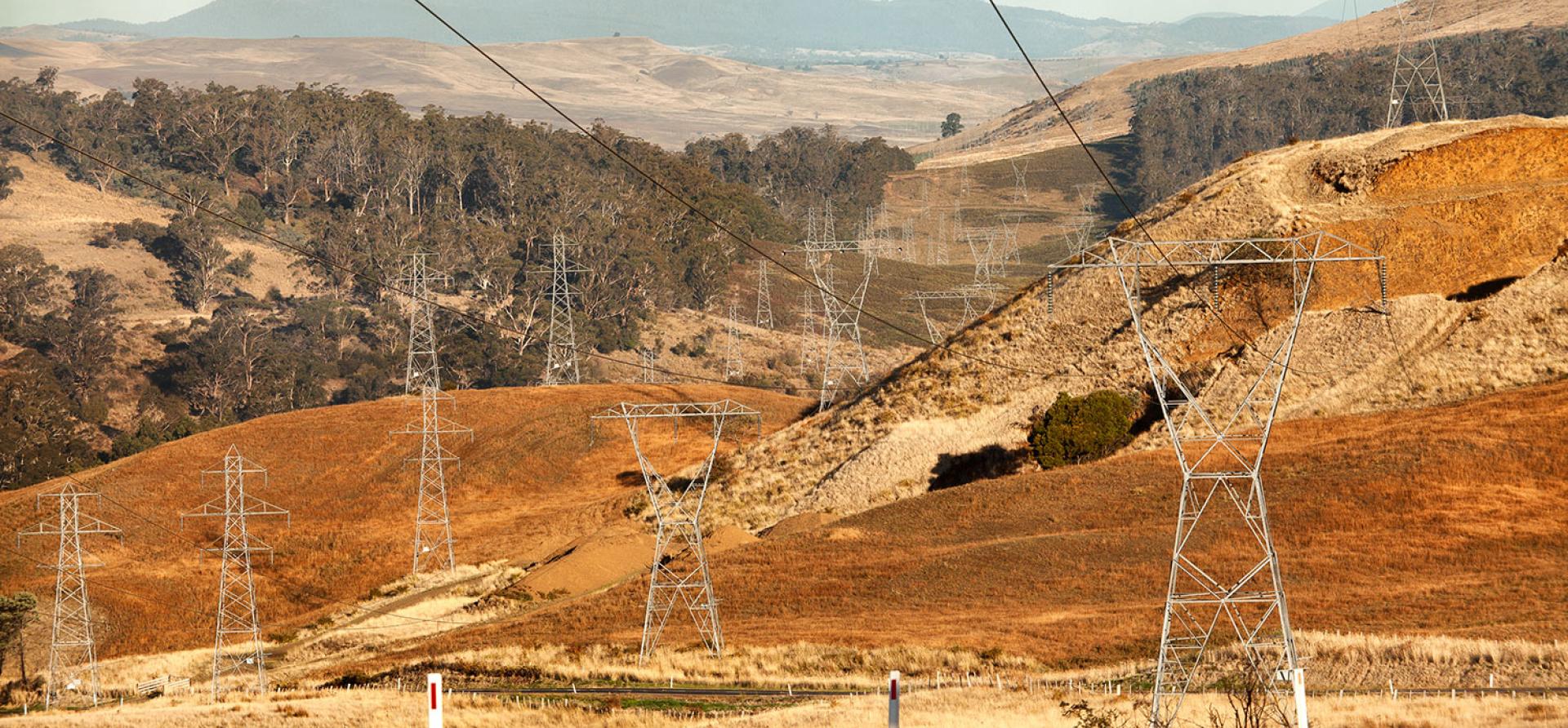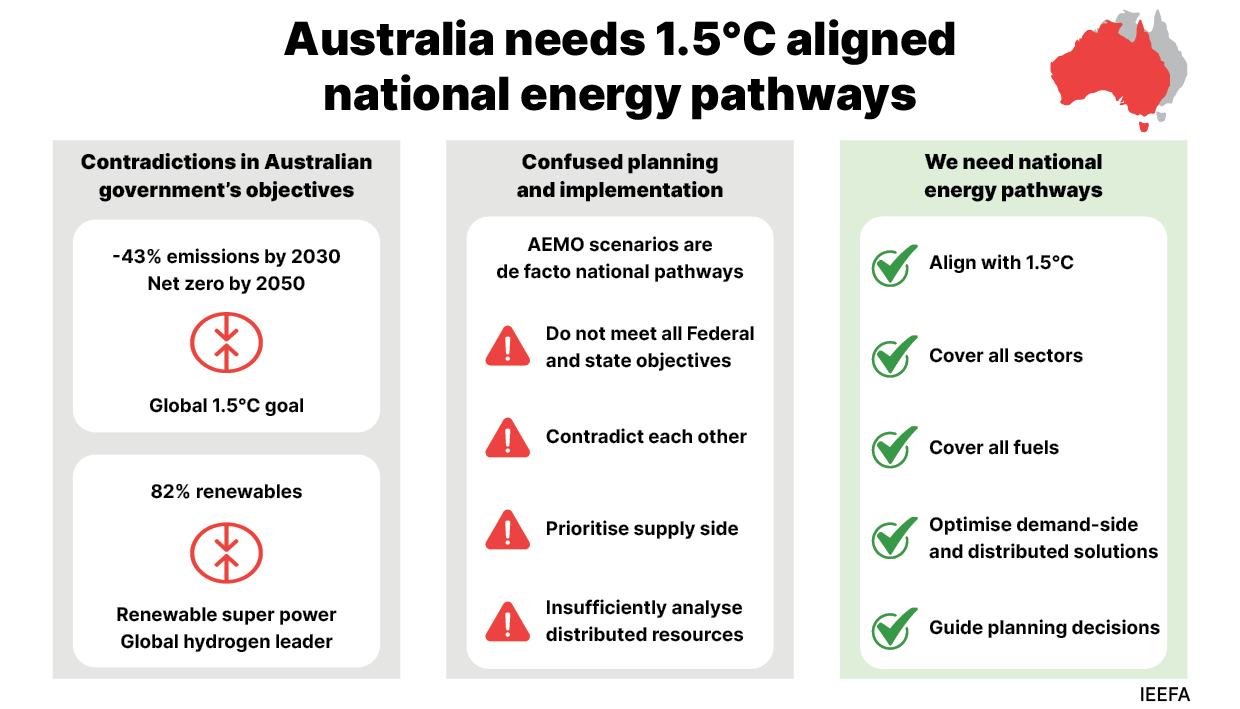
Key Findings
The Australian government has objectives that contradict each other, and lacks a comprehensive plan for how it will achieve its emissions reduction goals.
AEMO’s scenarios are used as a de facto plan, but do not meet several of the government’s objectives and state targets, and make questionable assumptions and choices.
Australia needs 1.5°C national energy pathways that look at the energy transition in an integrated way across fuel types, sectors and solutions.
In the absence of shared national energy pathways, the left hand of the government doesn’t know what the right hand is doing.
Executive Summary
The Australian government has made a clear commitment to the global goal of limiting global warming below 1.5°C. To support this objective, Australia has set emissions reduction and renewable electricity generation targets. However, it has no comprehensive plan for how it will achieve those targets, and some internal inconsistencies between different government objectives are creating confusion when it comes to implementation.
In the absence of a comprehensive plan, the Australian Energy Market Operator’s (AEMO) scenarios are used by many to support planning and investment decisions. However, the scenario presented as most likely only meets some but not all of the government’s objectives and doesn’t meet Victoria’s emissions reduction targets. Its electricity and gas scenarios also materially contradict each other, and AEMO’s choice of assumptions has been questioned by clean energy investors. The current piecemeal approach appears to prioritise supply-side solutions over demand-side solutions, and does not sufficiently analyse the potential impact and value of distributed resources.

Australia needs 1.5°C national energy pathways that look at the energy transition in an integrated way across fuel types, sectors and solutions. The pathways should investigate a wide range of possible outcomes – clearly identifying where solutions are preferable, and exploring alternatives where large amounts of uncertainty exist. The pathways should support planning decisions, and make recommendations on which new supply projects are essential, on timelines for phasing out key infrastructure assets, and on priority usage for scarce resources. This should include both domestic energy requirements as well as export-focused projects.
















